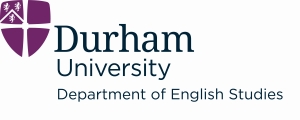‘Throbbing on taut ear-drum’: The Acoustics of David Jones’ In Parenthesis
Keywords:
David Jones, Poetry, Modernism, World War One, Literature and MusicAbstract
Often examined in relation to the landscape and realities of war, David Jones’ 1937 text In Parenthesis is also remarkable in its unwavering attention to the acoustics and sonic interfaces of battle. While previous studies have noted the thematic issues raised by the text, this paper will centre very much on its poetics, providing a detailed analysis of its phonic textures.
These textures are multiple and varied. Descriptions of noises encountered on the battlefield occur throughout, heightened by Jones’ use of onomatopoeia, alliteration, and anaphora. The repetitive tread of marching is captured in the alliteratative ‘feet following file friends’ (37), while the sound of gunfire is spoken of in relation to music: a ‘rising orchestration’ (38). These references to sound are self-conscious, and at numerous points in the work Jones depicts the act of hearing itself: ‘a sudden riot against your unsuspecting ear-drums’ (40), ‘you could lie, with exquisite contentment, and listen to the war’ (116).
In order to fully assess the text’s acoustics, an examination of the rhythms that underlie In Parenthesis is necessary. This paper will investigate the acoustic effects of merging prose narrative and poetic technique, and will also study the rhythms of everyday, colloquial speech as they are evident in the work. I argue that an understanding of the sonic textures of Jones’ modernist work is essential for a fulfilling and nuanced reading, and that above all the text is one that is ‘meant to be read aloud and listened to’ (Powers, 1971).
Downloads
References
Aldritt, Keith. David Jones: Writer and Artist (London: Constable and Robin, 2003).
Blamires, David. David Jones: Artist and Writer (Manchester: Manchester University Press, 1971).
Blissett, William. ‘The Syntax of Violence’. In David Jones: Man and Poet, ed. John Matthias, 193 – 208 (Maine: University of Maine, 1989).
––, and Alan Horne. David Jones: Artist and Writer (Toronto: Thomas Fisher Rare Book Library, 1995).
Dilworth, Thomas. The Shape of Meaning in the Poetry of David Jones (Toronto: University of Toronto Press, 1988).
––, ‘T. S. Eliot and David Jones’. Twentieth Century Literature 37, no. 2 (1991): 240 – 252.
Eliot, Valerie, ed. The Complete Poems and Plays: T. S. Eliot (London: Faber and Faber, 2004).
Gemmill, Janet Powers. ‘“In Parenthesis”: A Study of Narrative Technique’. Journal of Modern Literature 1, no. 3 (1971): 311 – 328.
Hague, René, ed. Dai Greatcoat: A self-portrait of David Jones in his letters (London: Faber and Faber, 1980).
Hopkins, Chris. ‘Mixed Languages: David Jones’ In Parenthesis’. The Swansea Review: Writing, Region and Nation 13, no. 1 (1994): 318 – 325.
Jones, David. In Parenthesis (London: Faber and Faber, 2010).
––, David. Anathemata (London: Faber and Faber, 1972).
Kermode, Frank, ed. Selected Prose of T. S. Eliot (London: Faber and Faber, 1975).
Pacey, Philip. David Jones and Other Wonder Voyagers (Bridgend: Poetry Wales Press, 1982).
Schafer, R. Murray. The Soundscape: Our Sonic Environment and the Tuning of the World (New York, Knopf, 1977).
Sherry, Vincent B. ‘David Jones’ In Parenthesis: New Measure’. Twentieth Century Literature 28, no. 4 (1982): 375 – 380.
Staudt, Kathleen Henderson. At the Turn of a Civilization (Michigan: University of Michigan Press, 1994).
Ward, Elizabeth. David Jones: Mythmaker (Manchester: Manchester University Press, 1983).
Watts, Cedric, ed. Hamlet (Hertfordshire: Wordsworth Editions Limited, 1992).
Downloads
Published
Issue
Section
License
Authors who publish with this journal agree to the following terms:
- Authors retain copyright and grant the journal right of first publication with the work simultaneously licensed under a Creative Commons Attribution-NonCommercial-ShareAlike 4.0 licence that allows others to share the work with an acknowledgement of the work's authorship and initial publication in this journal.
- Authors are able to enter into separate, additional contractual arrangements for the non-exclusive distribution of the journal's published version of the work (e.g., post it to an institutional repository or publish it in a book), with an acknowledgement of its initial publication in this journal.
- Authors are permitted and encouraged to post their work online (e.g., in institutional repositories or on their website) prior to and during the submission process, as it can lead to productive exchanges, as well as earlier and greater citation of published work. Authors may deposit the Submitted version; Accepted version (Author Accepted Manuscript); or Published version (Version of Record) in an institutional repository of the author's choice.

